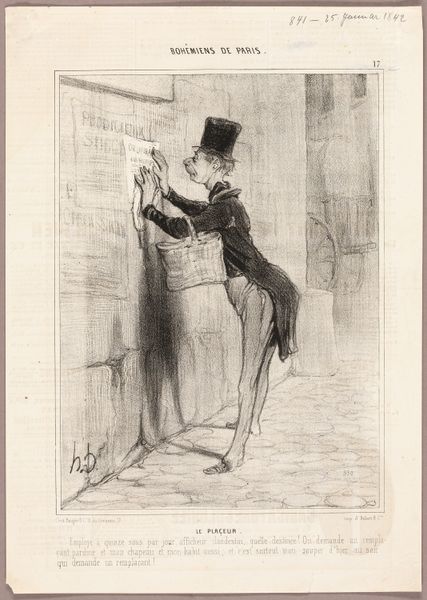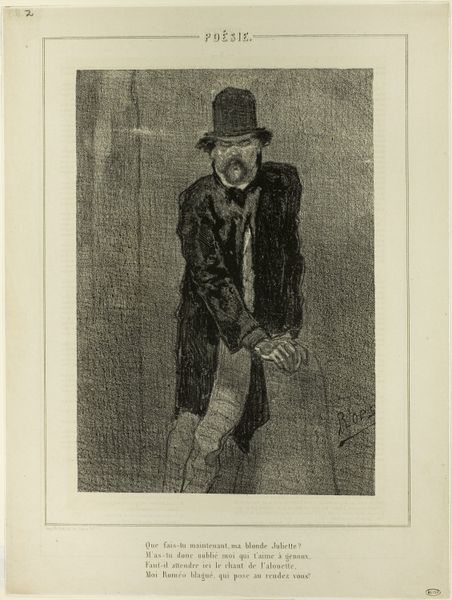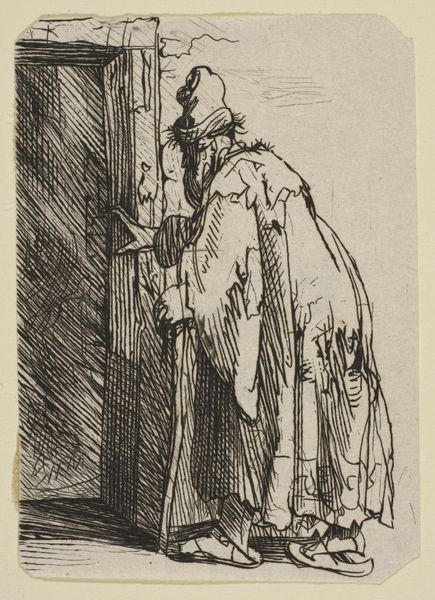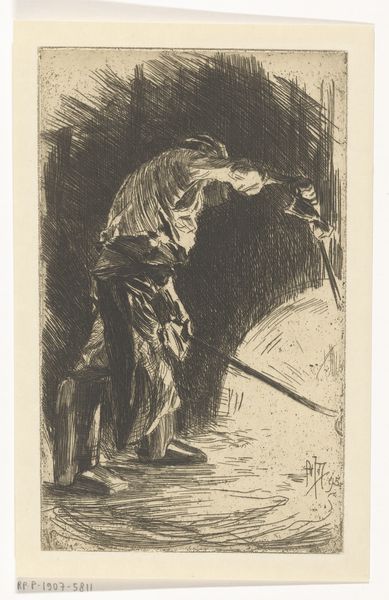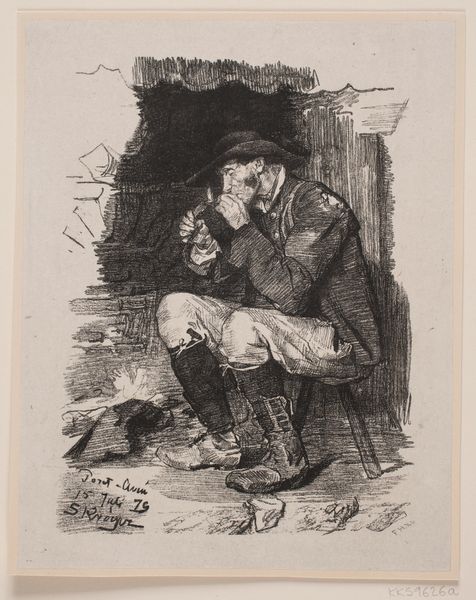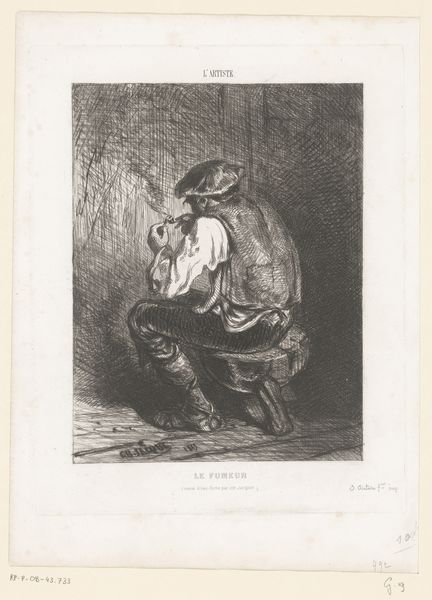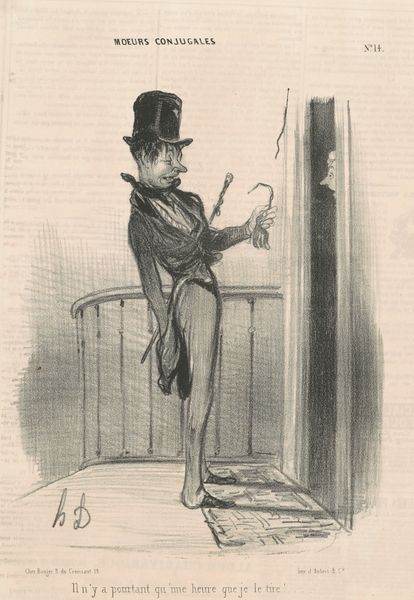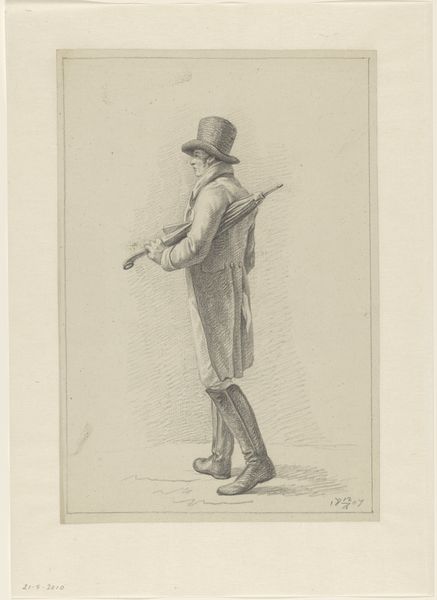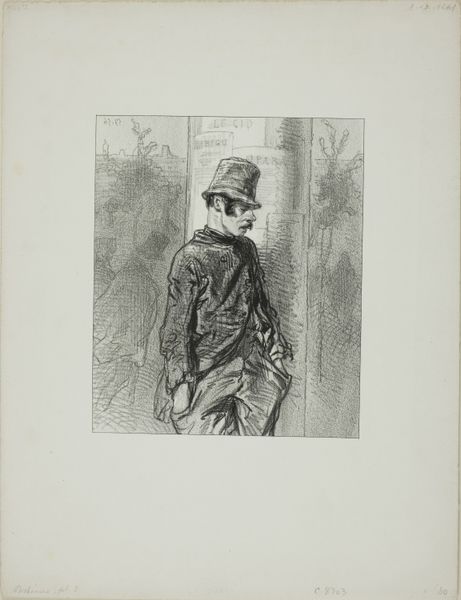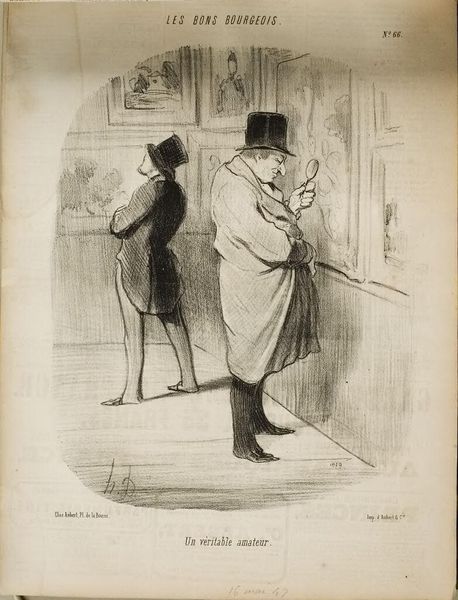
“Damn! They are happier than their master.... these bitches of boots... they drink!,” plate 2 from Vulgarités 1841
0:00
0:00
drawing, lithograph, print, paper, graphite
#
portrait
#
drawing
#
lithograph
# print
#
caricature
#
figuration
#
paper
#
romanticism
#
line
#
graphite
#
genre-painting
Dimensions: 242 × 168 mm (image); 327 × 247 mm (sheet)
Copyright: Public Domain
Editor: Here we have Honoré Daumier's lithograph from 1841, plate 2 from "Vulgarités", its long title is “Damn! They are happier than their master.... these bitches of boots... they drink!". The scene is gloomy and slightly pitiful. What stands out to me is how the figure is dwarfed by the urban environment. How do you interpret Daumier’s commentary in this piece? Curator: Daumier, known for his social and political critiques, used lithography to reach a wide audience through publications like "Le Charivari". This piece reflects the increasing urbanization of Paris and the resulting social disparities. How does the man's posture, his slumped shoulders and downcast gaze, contribute to your understanding of his social position? Editor: It definitely emphasizes his disempowerment and maybe even despair, especially against the backdrop of a seemingly indifferent city. I guess his "bitches of boots" out-drinking him highlights his loss of control? Curator: Precisely. Daumier consistently used caricature to expose the hypocrisy and injustices within the bourgeois society. His prints offered a visual commentary on the social and political issues of the time. Have you considered how the availability and accessibility of prints influenced public opinion during that period? Editor: I see how the print's reproducibility enabled it to challenge and maybe subvert the status quo more broadly, circulating critiques beyond the elite circles. Curator: Yes. "Vulgarités" indeed exposes the raw, uncensored aspects of urban life. The title itself, along with the unflinching depiction of everyday struggles, directly challenged the romanticized ideals prevalent in much of the art of that time. The lithographic technique also lent itself to mass production and wide circulation of imagery, thereby democratizing imagery in an unprecedented manner. Editor: That makes a lot of sense! I hadn’t fully grasped how the medium itself contributed to the message and its reach. Curator: It all worked together, influencing how the image was perceived and the impact it could have. That kind of democratization through lithography really did alter public life and opinion. Editor: I'll definitely look at Daumier's other works through this lens from now on! Thanks for expanding my understanding.
Comments
No comments
Be the first to comment and join the conversation on the ultimate creative platform.
